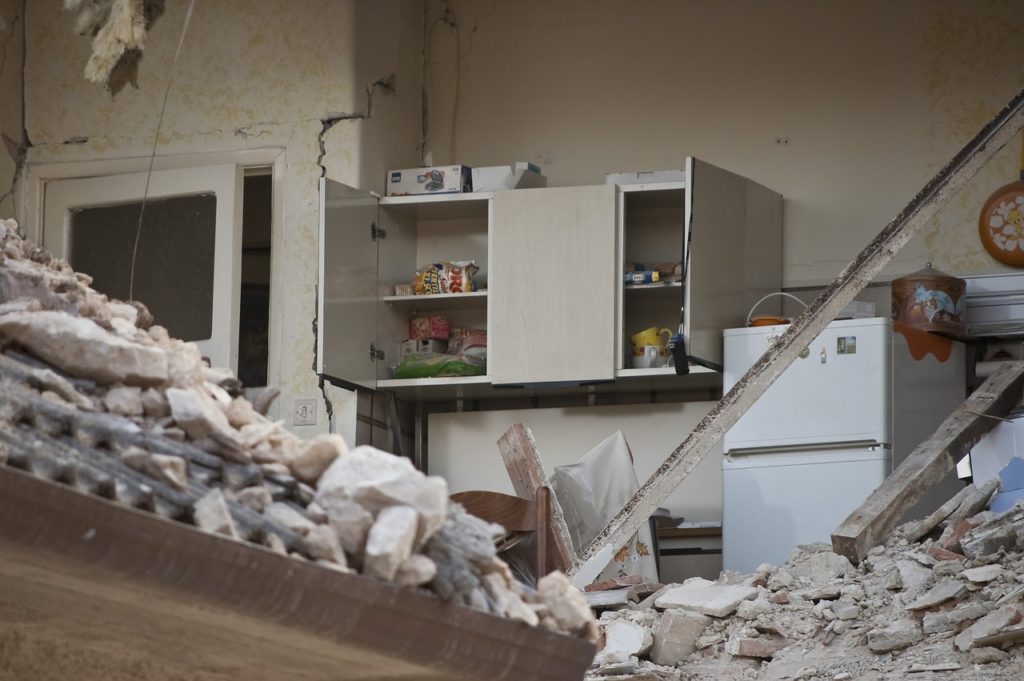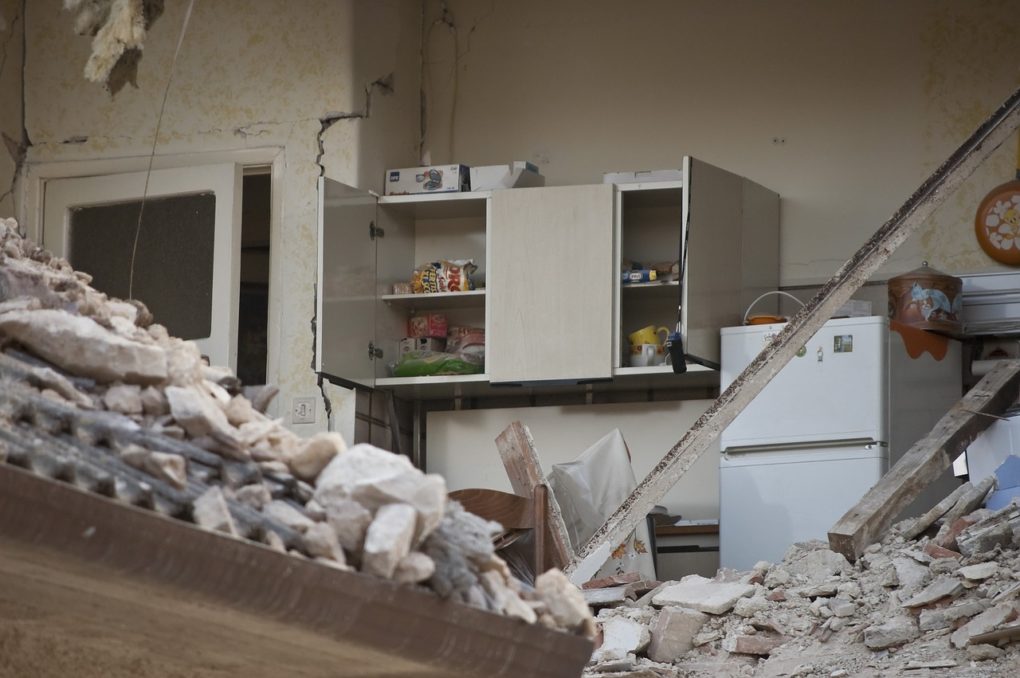What To Do If An Earthquake Hits While You Are Indoors: An At Home Emergency Kit
 By Mac Slavo
By Mac Slavo
Those who live in fault zones, or near them should already be prepared for an earthquake. But with the rise in the instability of faults all over the country, it’s always a good idea to make sure those who have just moved to a “shaky” area are prepared as well.
If an earthquake hits while you’re indoors, you will want to remain indoors, and this earthquake emergency kit and guide could help you prepare for that possibility. Obviously, you may be outdoors or driving when an earthquake strikes, but that’s a different prep for a different day. Today, we are focusing on what to do and how to set up your home earthquake kit.
Widget not in any sidebars
WHAT TO DO
Don’t go outside, stay indoors and seek cover to limit injuries from falling objects. Go under a table but stay away from glass, windows, and outside walls. If there’s no table or other pieces of furniture you can get underneath, crouch in an inside corner of the building and cover your face and head with your arms and hands. Stay put until the shaking ends.
WHAT TO PUT IN YOUR HOME EARTHQUAKE KIT
If you prepare in advance and have an earthquake kit on hand, should an earthquake strike while you’re at home, you’ll at least be somewhat ready to take action. Some of the things many suggest you should have readily available if you live in an earthquake zone are:
- Fire Extinguisher – this is a no-brainer, and we should all actually keep at least one of these in the kitchen of our homes anyway. But if this is the first time you’ve heard you should have one, grab a good one, and maintain it! That way you know it’ll work if you need to literally put out fires after an earthquake.
- First Aid Kit – you will need this if there are any injuries to yourself, your family, or a pet during an earthquake. A trauma kit could be helpful as well, and don’t forget those often overlooked medical supplies that easily slip our minds!
- Emergency Food and Water – you may lose electricity and won’t be able to get water (unless you are on a well and have an “off-grid solution” already figured out. Because it’s highly likely the power will be out for at least a few days, store some non-perishable food that doesn’t require cooking. As far as water goes, your goal should be to have one gallon of water per person per day for at least two weeks. This will be enough to keep you hydrated, but consider saving more so you will have enough for personal hygiene. And don’t forget the pets! They will need water too!
- Plastic Sheeting, Tarps, and Duct Tape – these will be useful to close off broken windows or to put up over holes in the roof of your house to prevent further damage. This is a temporary fix until you can repair your home.
- Tent – keep a tent handy in case your home is not safe to sleep in.
- Flashlight and/or candles – this will give you some sort of lighting if the electricity is out.
Again, as I’ve repeatedly stated, this is far from an exhaustive list of things you should have, but these 6 items are definitely essentials. Stay safe and stay well prepared for anything!
This article was sourced from SHTFplan.com
Image credit: Pixabay
Subscribe to Natural Blaze for health freedom and natural living headlines to your inbox. Follow Natural Blaze on Twitter and Facebook.



